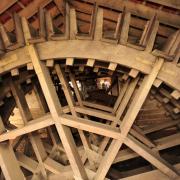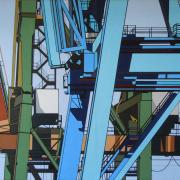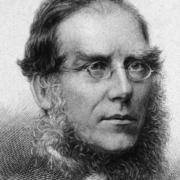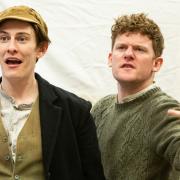The studio of Suffolk artist Val Armstrong is awash with colour, bright canvasses that reflect her irrepressible spirit rising above dark times. The art is abstract, 'a sort of painkiller', she quotes from another artist, Henri Matisse, 'which gives peace and tranquility'.
Val, you could say, is a survivor, and her art has played a vital part in her survival. Just over seven years ago, on August 2 2016, her husband, David Wood, set off on a walk from their holiday home in Marie, south-east France, and never returned. An extensive search of the area found no trace of him, a reasonably fit, highly intelligent computer engineer, who had left the house with two mobile phones, one English and one French, and two walking sticks.
With the help of their two sons Danny and Richard, Val was left to pick up the pieces, to reflect on the riddle of a loving, family orientated husband who simply disappeared.

'I returned from France with no resolve and just didn’t know what to do,' she says, still emotional about the aftermath of those strange times. 'I’d lost my memory and was in this sort of fog, which I didn’t come out of for months.' The fog, not surprisingly brought her art to a standstill; her joyous colourful canvasses became irrelevant and unreachable.
'I questioned how I would go forward but knew that somehow I had to.' The studio where we are sitting, built at the end of the garden more than 30 years ago by Val and David, is evidence that somehow she found her way out of the morass. There are paintings influenced by a visit earlier this year to Mexico, which of late has become her escape from another darkness, the English winter. Other paintings, indeed the clutter of work in progress in her studio, suggest a recovery of sorts. Art has been her therapy.
This is a reminder, arguably, that the world is round and spinning. After art college, Val trained as an art therapist, working with damaged adults and children. She met David in Cambridge, where she had set up her own practice. She remembers working with an isolated boy who had complex learning difficulties, using the Indonesian wax resist technique of batik, whereby wax is applied to cloth, or other materials, to protect some areas from new colour in the pattern. 'It’s got a great fluidity about it because of the wax and it gave him a huge sense of achievement. It made him feel different and special.'

After David’s disappearance and a quest that took her through numerous exchanges with healers and mediums, fellow sufferers, and others who might bring comfort and some kind of resolution, Val also started seeing what is best described in this context as a mainstream therapist. 'I finally found someone who could sensitively guide me through the darkness. One day I was sitting in her therapy space and I suddenly knew that I had to start painting again.'
By the same token, she says, “I felt I needed some help to kick start the creative process so I joined an online course, “The Creative Visionary Programme”, with a man called Nicholas Wilton in California who has worked with artists all over the world. The course focused on finding your own voice through art and allowing the soul to come through. What happened to me doesn’t have an end but once I had done the course I was ready to throw my emotions into my art. It was an outlet for the pain and I know the power of creativity in situations like this.”

Val has returned to Marie since David's disappearance, despite the painful memories it can evoke, and in another bizarre twist to this very strange tale, she shows me a page from a book she has produced on the village. It includes a series of paintings she made before her last fateful visit there with David. There is a painting called The Surprise featuring a curly-haired man against a white celestial backdrop; he could be David. Another is The Unknown, three mystical figures locked together in a translucent haze.
Perhaps the most poignantly titled of them all is The Search. Look closely and you can see another figure, this time framed and hidden amongst a surreal backdrop of shapes and colours. Where did these pictures come from? Her half-serious response is that she could be psychic.
'I didn’t know where the paintings came from,' she says. What she remembers of the time shortly before David’s disappearance is that she felt uneasy and anxious; she wanted to keep him close and safe. His walks – keeping fit after hours at the computer – were always accompanied by phone calls and time checks, all of which make what occurred that August day even more astonishing.

As we talk Val is preparing for another exhibition, this one in West Suffolk. The art therapy continues. 'It has helped me to recover. I felt like a trembling mess and I had to pick myself up.' Emotional damage, she believes, can itself produce creativity. Her approach, her technique, her immersion in the whole process of making art have all been part of the healing process.
She elaborates without hesitation. 'My paintings start off with play; for example, throwing paint on a white canvas or covering it with bright coloured collage, before going on to explore ideas and content. I might use a glaze, which allows you to change the tone of a picture. My system of painting is intuitive, a mix of media to produce the result, often mysterious even to myself.' The end result, she says, is that the creative process has helped her to recover her emotional strength and sense of purpose.
While David’s disappearance remains unsolved and unresolved, 'art has given me new confidence; a way of existing alongside something that will never go away.'
You can see Val's art and read her blog at valeriearmstrong.com



























